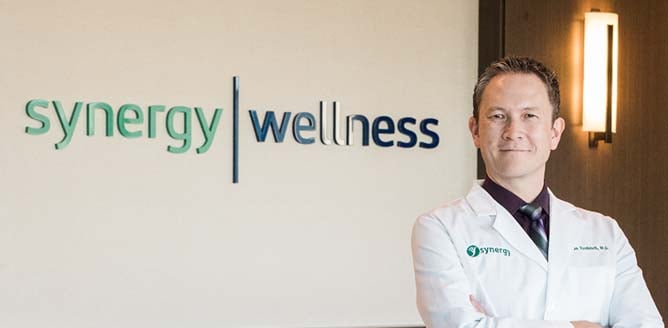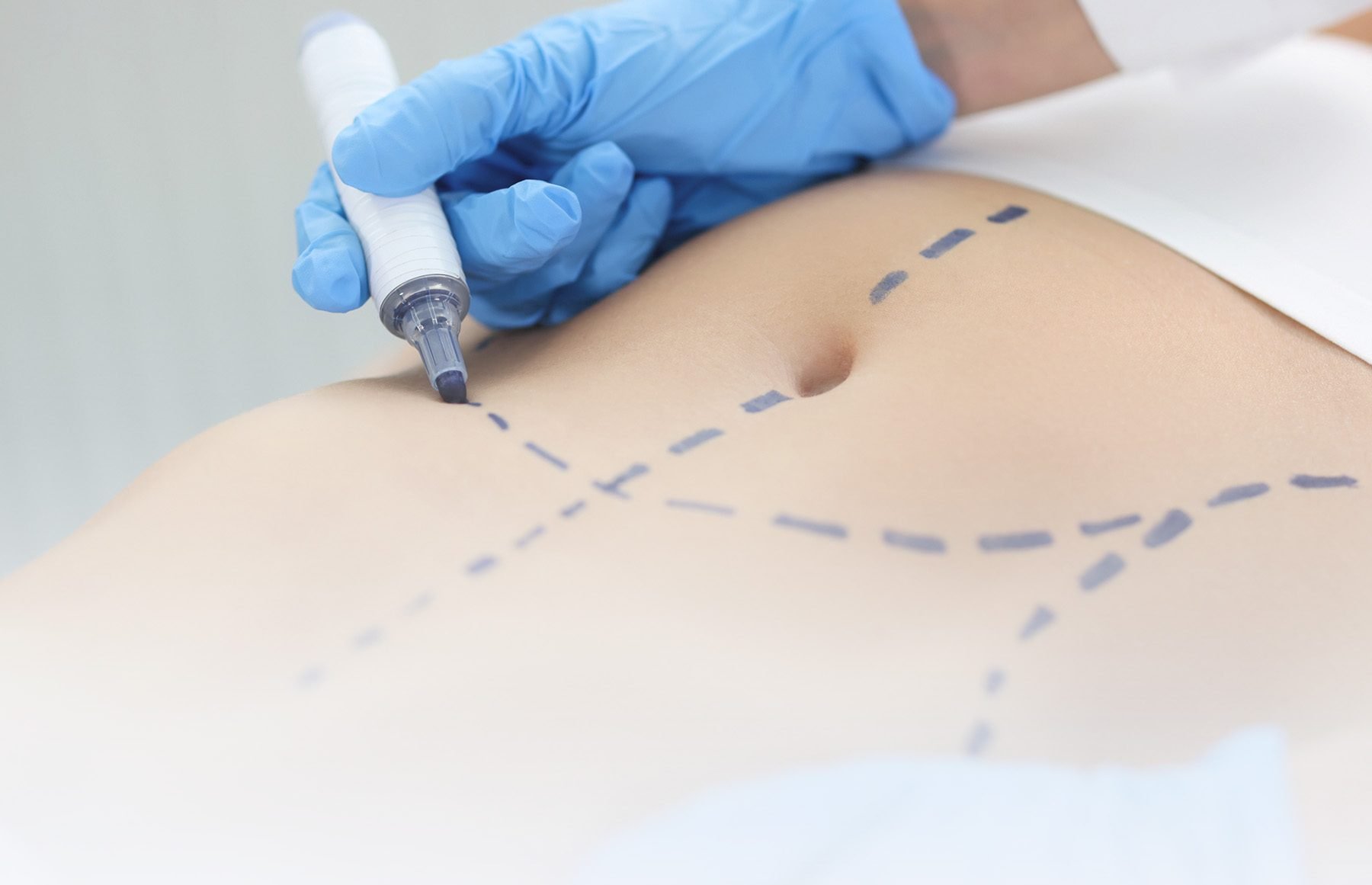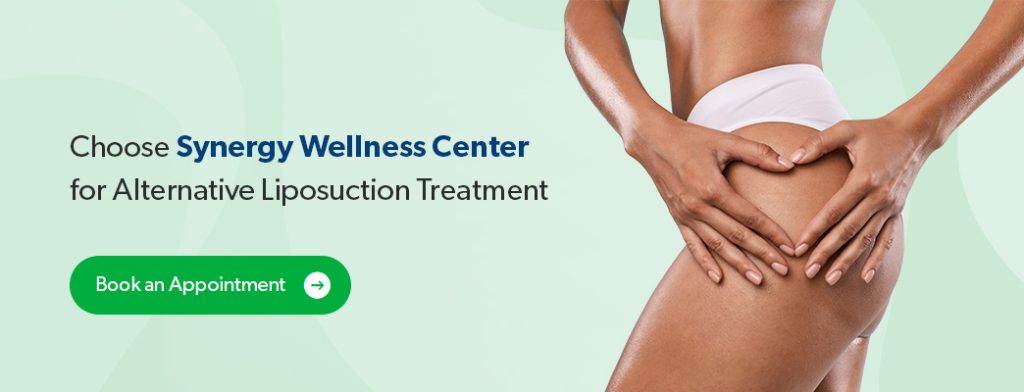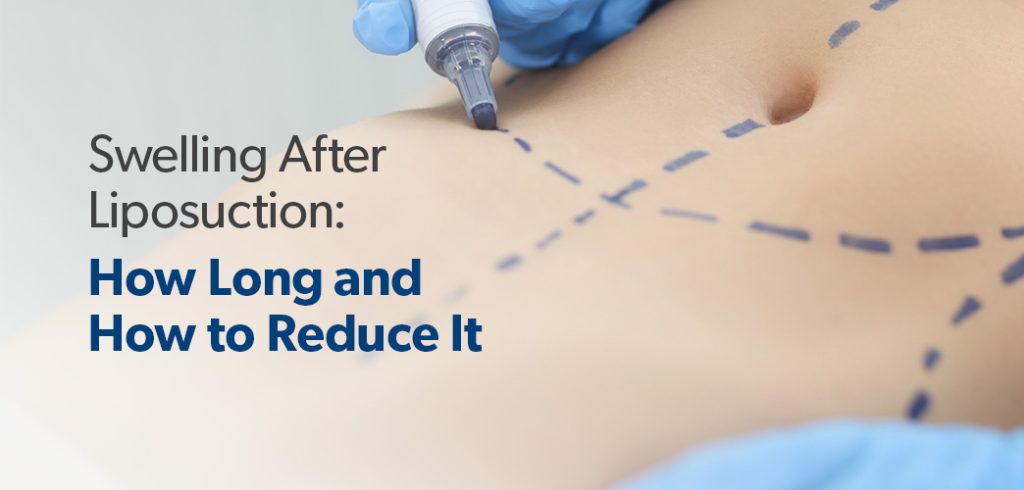
If you’re one of many looking to reduce your body fat and achieve your desired contour, you’ve likely considered liposuction at one point. You might be aware that swelling occurs after liposuction but not precisely what to expect or how to reduce it.
This article guides you through what you can expect after the liposuction procedure and the methods you can use to reduce swelling, discomfort and scarring.
Why Get Liposuction?
You may have noticed some limitations if you’ve tried other methods to lose weight, such as dieting or exercise. While these methods can help you lose weight, they may not help you reach your ultimate goal. Some people may even find it more challenging than others to lose weight through diet and exercise due to various complications, such as medications or an underactive thyroid.
The good news is that there are alternatives to traditional weight loss methods. Liposuction is an excellent alternative to help individuals lose weight and uses a suction technique to target many areas that retain excess fat, such as the hips, thighs and abdominal region. Liposuction treatment has evolved since medical professionals started using the cosmetic procedure to help patients lose weight and has become safer, gentler and more effective.
However, patients must have realistic expectations for liposuction. This procedure doesn’t provide immediate results, which sometimes makes people believe that the treatment hasn’t worked. Knowing what to expect from liposuction can help you set realistic expectations and achieve your desired results.
What to Expect Immediately After the Liposuction Procedure
After liposuction treatment, knowing what to expect can give you peace of mind and make you feel more comfortable once the procedure is over. After treatment, you can expect to feel a little discomfort or pain. You may also experience some redness, swelling and bruising. Your doctor should prescribe medications to relieve your discomfort.
Your doctor will also give you aftercare instructions to help you manage your symptoms while your body heals. Your doctor might recommend wearing a compression garment, which will help reduce inflammation and swelling while promoting healing. The swelling should start to go down after a week of rest and care but can get more pronounced than days before due to your level of activity and motion.
Even once the swelling goes down, you should still wear a compression garment for up to four weeks or longer if your doctor has directed you to do so. Swelling can last as long as six weeks in some cases, but the discomfort and significant swelling should subside in a few days. You should be able to get around and feel comfortable enough to return to work in just a few days if your job is less strenuous.
Scarring
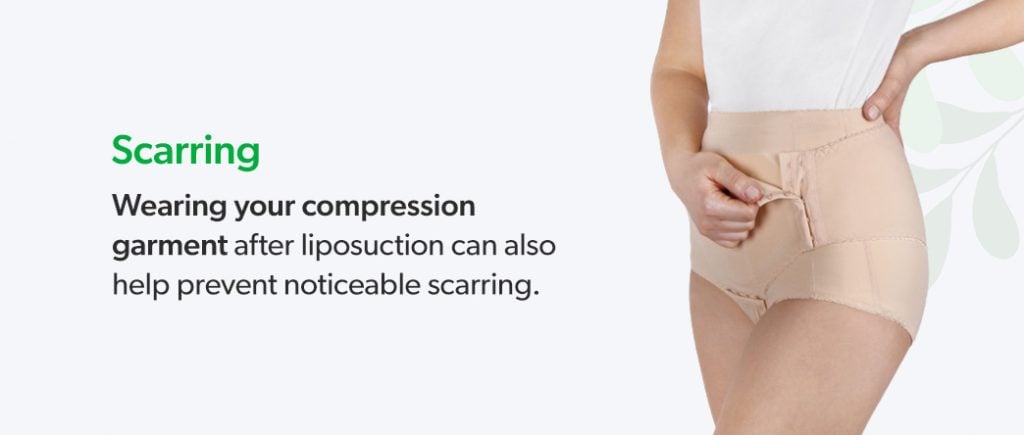
The liposuction procedure involves minor incisions targeting specific areas and removing excess fat. During the process, medical professionals will try to make the incisions as small as possible while keeping them in inconspicuous areas. Your doctor will provide you with aftercare instructions to help you care for these incisions. If you follow these instructions closely, the incisions will heal correctly, and you should experience very minimal scarring.
Significant scarring from liposuction is uncommon for most individuals, but some people might experience hyperpigmentation after liposuction surgery, making incisions and resulting scars look more prominent. Wearing your compression garment after liposuction can also help prevent noticeable scarring.
It’s natural to want to try to reduce or eliminate scarring where possible to achieve your desired look. Multiple methods can help you minimize scarring once you’ve recovered from liposuction treatment. Professional dermatologist treatments include laser therapy and scar removal surgery.
Pain Management
After liposuction, your experience with pain and discomfort might vary compared to other patients. Some people have a higher pain tolerance than others and might describe their post-surgery pain as mildly uncomfortable but otherwise not a problem. Others may compare the pain to something like soreness or discomfort after a strenuous workout.
Most people notice that the pain starts to go away after about a week, though some will have shorter or longer liposuction recovery times. After treatment, your doctor will work with you to create a pain management plan to help you manage the most uncomfortable days. Your doctor may place you on a medication regimen to help reduce inflammation and pain, assisting with swelling.
You may also have to make some temporary lifestyle changes until you recover, such as taking time off from work and athletic activities, resting in bed for a few days and having another person help out with the household chores or errands.
The compression garment you’ll be wearing may also make you feel more constricted than usual and could contribute to additional discomfort. However, you should be able to manage any discomfort or pain easily with medication and plenty of rest. If you experience any long-lasting or extreme pain, contact your doctor since this is a rare side effect of liposuction and could signify a complication from the procedure.
Swelling: When Does It Happen and How Long Does It Last?
Swelling may be discouraging for some patients since their goal is to lose weight and improve their appearance. Swelling can make it seem as if the procedure was anything but successful. However, swelling is just your body’s natural reaction to the surgery and is a sign that you’re healing.
How long swelling lasts after liposuction varies, but you’ll likely notice a gradual increase in swelling for the first 48 hours. The majority of the swelling should dissipate after about a week, but some people may experience minor swelling for up to four months post-procedure. While this may be the last thing you want to hear, remember that swelling is essential for healing as your body adjusts to your new contour.
Your doctor will have you wear a compression garment to help your skin contract and reduce swelling. You’ll be required to wear the compression garment for four weeks or longer, depending on the severity of your swelling.
Follow your surgeon’s instructions closely to get the most out of your procedure and ensure you’re taking care of yourself. Besides wearing your compression garment regularly, your surgeon will likely also recommend you:
- Avoid strenuous exercise
- Avoid excessive sun exposure
- Reduce heat exposure
Heat exposure can contribute to additional swelling, so you’ll want to avoid sunbathing, hot showers or baths, hot yoga and sitting in a sauna. Even once you’ve recovered from most of your procedure, strenuous exercise can cause minor swelling six to nine months after your initial procedure.
How to Reduce Swelling After Liposuction
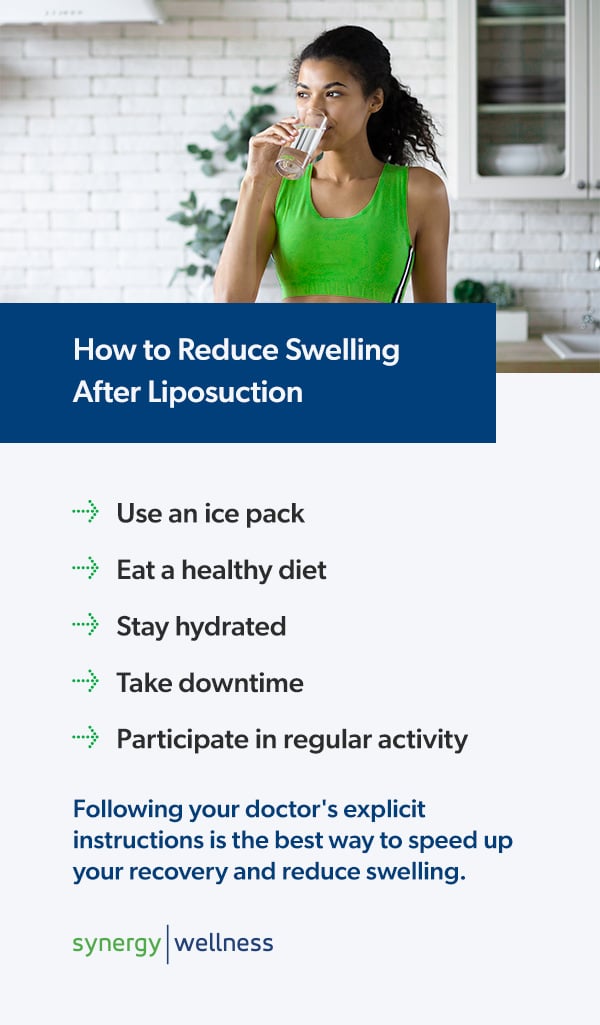
Following your surgeon’s instructions can help you reduce swelling during the early stages of your recovery, including using your compression garment regularly. Other methods you can try to reduce swelling include:
- Using an ice pack: While heat can increase your swelling, cold can help do the opposite. Try applying a cold compress or ice pack to the affected area to help reduce the swelling. Ice packs can also help reduce any pain or discomfort in the early stages of recovery. Talk with your surgeon to ensure you don’t overdo it with the ice.
- Eating a healthy diet: Eating a healthy diet is essential to maintaining the results of your liposuction procedure, but the proper diet can also help reduce swelling. Too much sodium can cause your body to retain excess water, contributing to post-procedure swelling. Instead, try eating more iron-rich foods to help reduce inflammation and swelling.
- Staying hydrated: Most swelling is caused by inflammation, which you can reduce by drinking plenty of water each day. The amount of water you need to drink will vary based on your body, but generally, men should drink about 3.7 liters a day and women 2.7 liters.
- Taking downtime: Rest is an essential part of the recovery process to help reduce swelling, and the time will vary between patients. Some people heal more quickly than others and can return to most regular activities after a week. Others will require more time. In general, your doctor will tell you to avoid strenuous activity for a while after the procedure and avoid bending, lifting or straining your body for at least a week. You likely won’t be able to return to the gym for at least four weeks.
- Participating in regular activity: Once your doctor tells you it’s all right, establish a normal exercise routine to help promote healing and reduce swelling. Low impact activity can speed up wound healing by 25 percent in some patients.
Following your doctor’s explicit instructions is the best way to speed up your recovery and reduce swelling. The medications your doctor prescribes can also help reduce inflammation and swelling, so it’s essential to continue taking them as directed. Talk with your doctor if you’re concerned with how much you’re swelling after liposuction or if swelling affects your daily life.
Recovering From Liposuction
The recovery process will look slightly different for everyone since your body is unique and heals at its own pace. After the procedure, your doctor will wrap the area to help with pain, swelling, inflammation and bruising. The wrap will also prevent blood from filling the area where the doctor removed the excess fat, allowing your body to maintain the ideal shape. You’ll likely have to wear this compression garment for three to four weeks, though some may wear it longer.
For some time after the procedure, fluid might drain from the incisions. At first, it will be a bit bloody but should turn clear in a few short days. Most of the swelling should dissipate after 14 days, but you still may have some minor swelling afterward. Most people can return to non-strenuous work within a couple of days, and you can resume your regular activities as soon as you feel ready. Depending on how fast your body heals, this can be just a few days or a few weeks.
Some people might feel a little down after liposuction since the results aren’t immediately what they hoped for. Remember that liposuction isn’t an immediate fix, and your body needs to heal. After a time, you’ll notice the difference in your body’s shape as the swelling goes down.
Self-Care Tips
Taking care of yourself after liposuction can help you feel more comfortable as your body does the work to help you recover. Follow these self-care tips to ensure your body can heal as quickly as possible:
- Prioritize rest: Rest is one of the essential parts of the recovery process. If you feel tired, your body is trying to heal, so get some sleep when you notice you’re fatigued.
- Take a walk: Walking a little bit each day can help increase blood flow and promote healing. Start slowly and increase the amount you walk each day. If you feel pain and discomfort, stop or reduce the distance. Remember not to push your body beyond its limits to heal correctly.
- Follow hygiene recommendations: You may want to shower directly after treatment, but it’s best to wait until 24 to 48 hours have passed to protect the incisions. Remember not to take a bath too soon after your procedure, or you could increase swelling. Talk to your doctor about when you can start taking baths again.
- Care for your incisions: Be gentle with the incision areas for a while after treatment. If tape covers the incision, leave it on for a week or until it falls off naturally. If you have stitches or staples, your doctor should let you know when to come in to have them removed.
- Take medications as prescribed: Your doctor might prescribe antibiotics or pain medications to prevent infection and assist with discomfort. Ensure you’re taking your medicines according to the instructions provided by your doctor and pharmacist.
- Remember to eat: Your body needs the energy to heal, so it’s essential to remember to eat regularly to give your body the nutrients and sustenance it needs. You can eat your regular diet after liposuction, but if you feel nauseous, you can try eating bland foods for a while. These include toast, plain rice and applesauce.
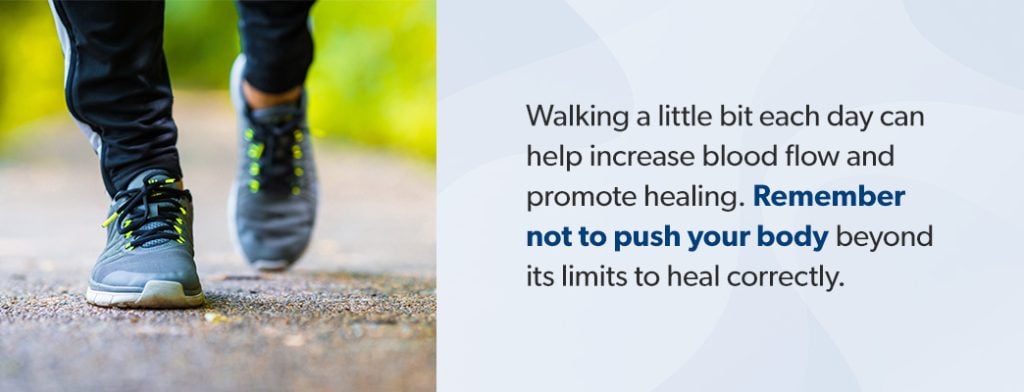
Alternatives to Traditional Liposuction
While traditional liposuction has worked for many people, some alternatives can help you target those stubborn areas and help you achieve your perfect body. At Synergy Wellness Group, we offer five alternatives to traditional liposuction, including:
- Vaser Lipo: Vaser Lipo uses ultrasound technology to target fatty tissue, which is then suctioned away to help you achieve your ideal shape. Vaser Lipo can provide immediate results to areas including the chest, upper arms, abdomen and buttocks, all without damaging the area.
- SmartLipo: SmartLipo utilizes traditional techniques and improves the process by incorporating laser energy and a temperature-controlled cannula. These improvements help reduce recovery time and stimulate collagen production, which can smooth your skin and improve your overall appearance.
- Cellfina: Cellifina helps reduce the appearance of cellulite using microblade technology. The microblade technology helps release the fiber bands causing cellulite, which allows the dimples to fill. You can see a noticeable difference in just a few days, and the results can last up to three years.
- BodyFX: BodyFX is a cellulite and fat treatment that works by distributing heat and radio-frequency energy to fat pockets under the skin’s surface. This treatment can effectively reduce fat deposits and dimpling and restore elasticity to multiple areas of the body.
- Mini fat transfer: A mini fat transfer involves taking fatty tissue from the abdomen, thighs or flanks and re-injecting it into the desired area to smooth wrinkles and other textural imbalances. The results of this treatment can last for decades.
Alternative liposuction treatments can help reduce the downtime and swelling associated with traditional treatment. You can also target specific areas and do more to improve the appearance of your body and skin.
Choose Synergy Wellness Center for Alternative Liposuction Treatment
Traditional liposuction comes with many side effects, such as pain, discomfort, bruising and swelling. The downtime could also disrupt your regular schedule longer than you’d like or can manage. At Synergy Wellness Center, we offer alternative liposuction and body shaping treatments to help you improve your appearance without the adverse effects of traditional liposuction.
Our treatments are effective and affordable, giving you a budget-friendly way to achieve your ideal contour. Contact us today to learn more about our services or book an appointment.

